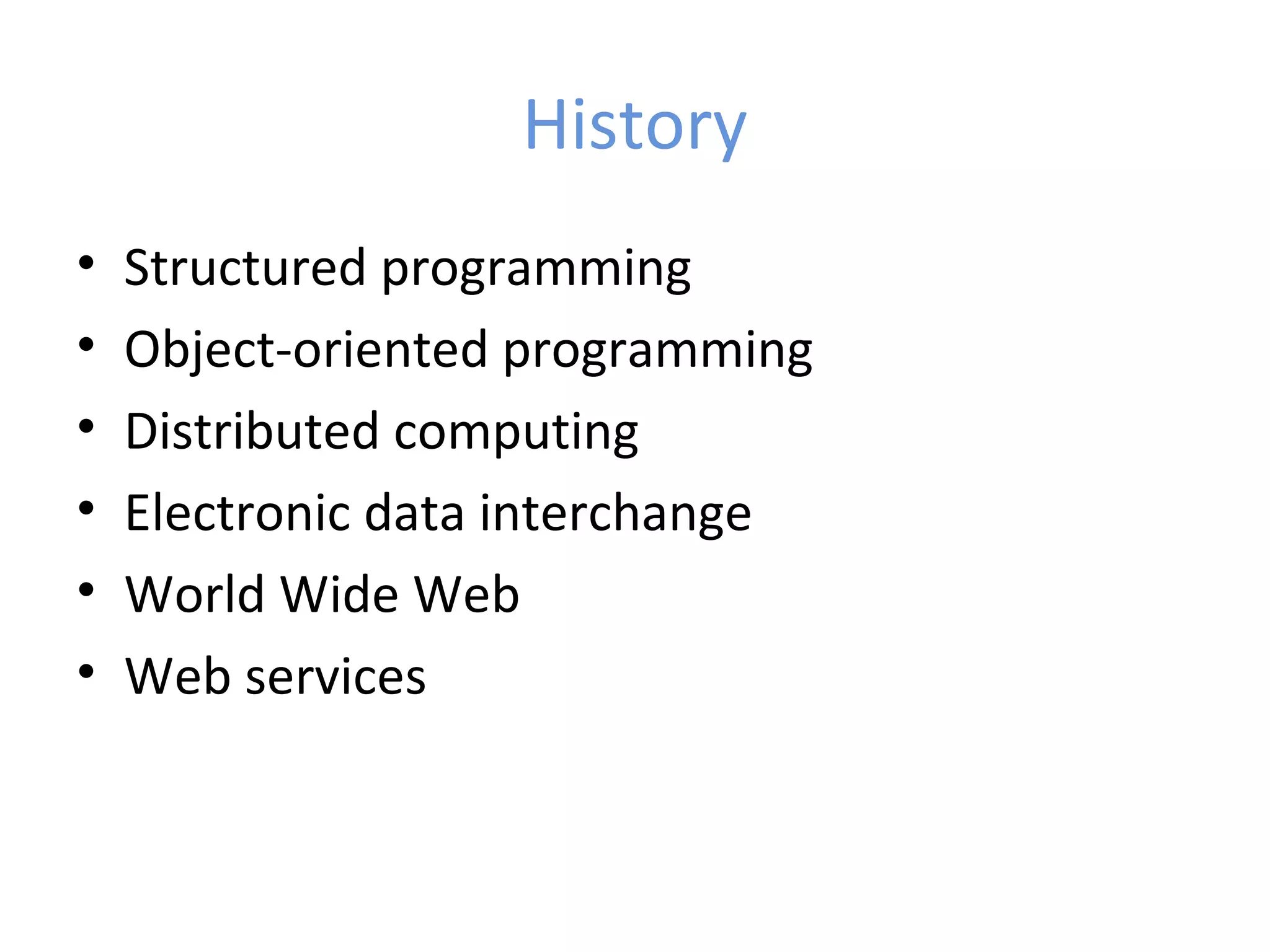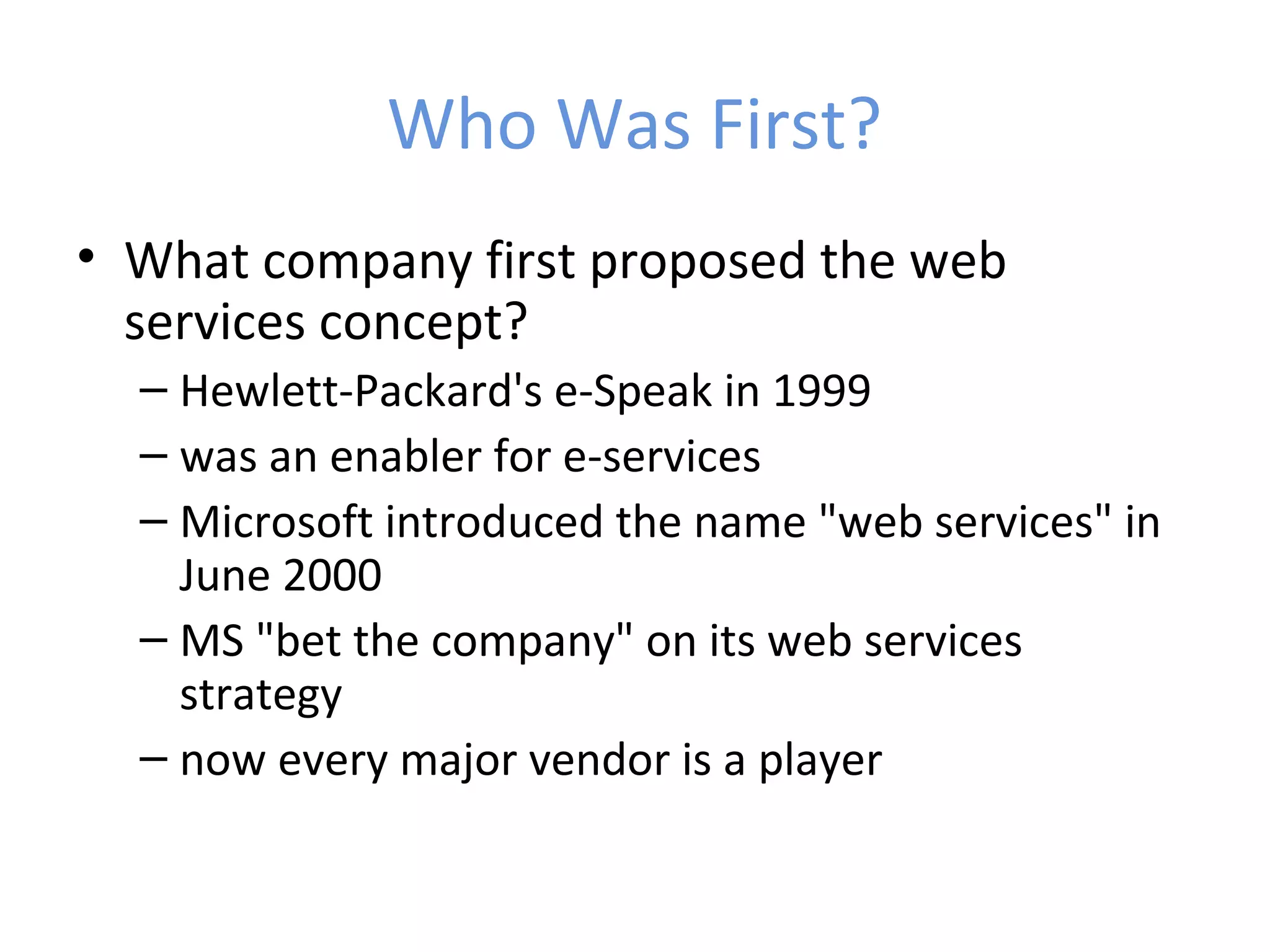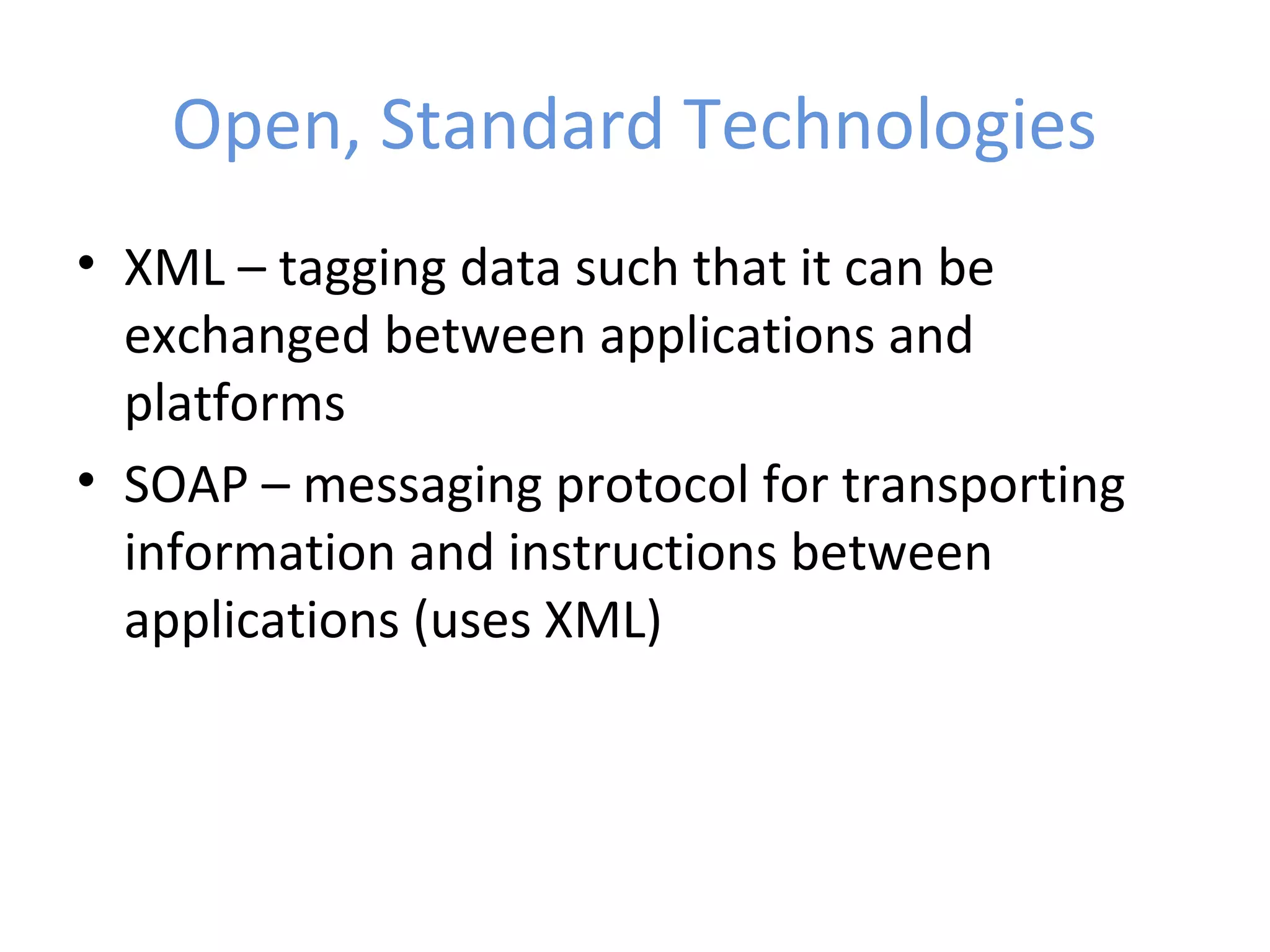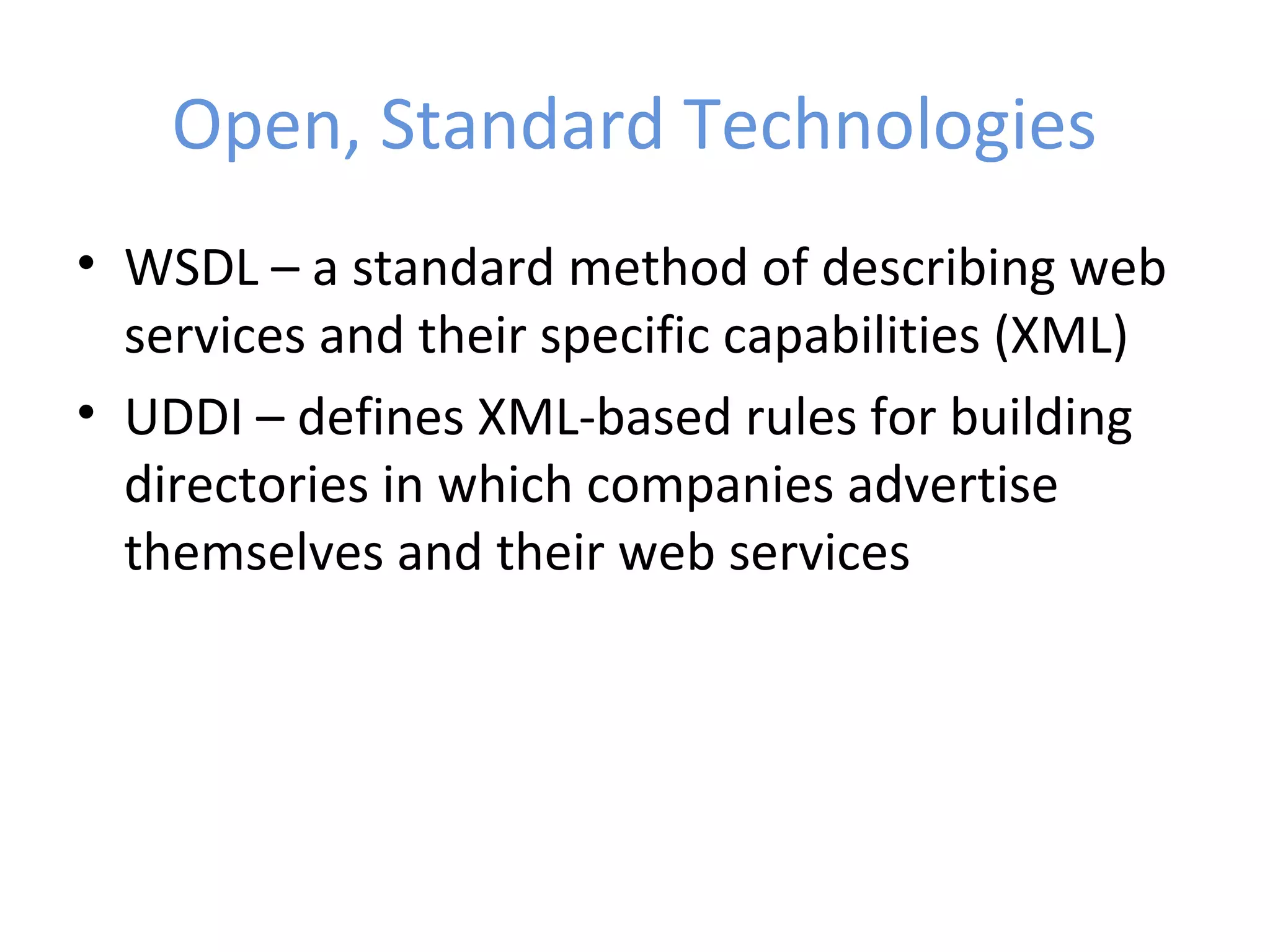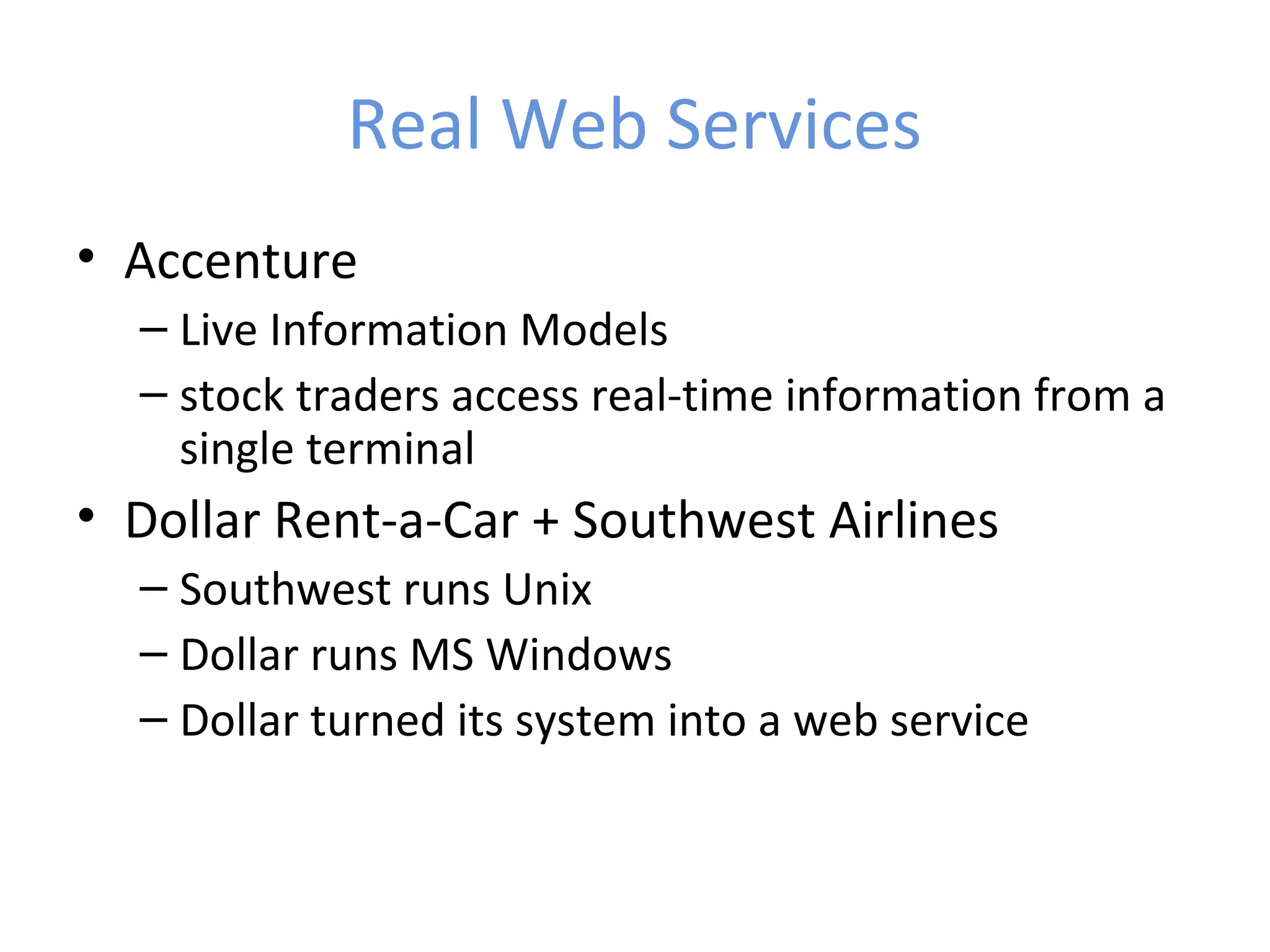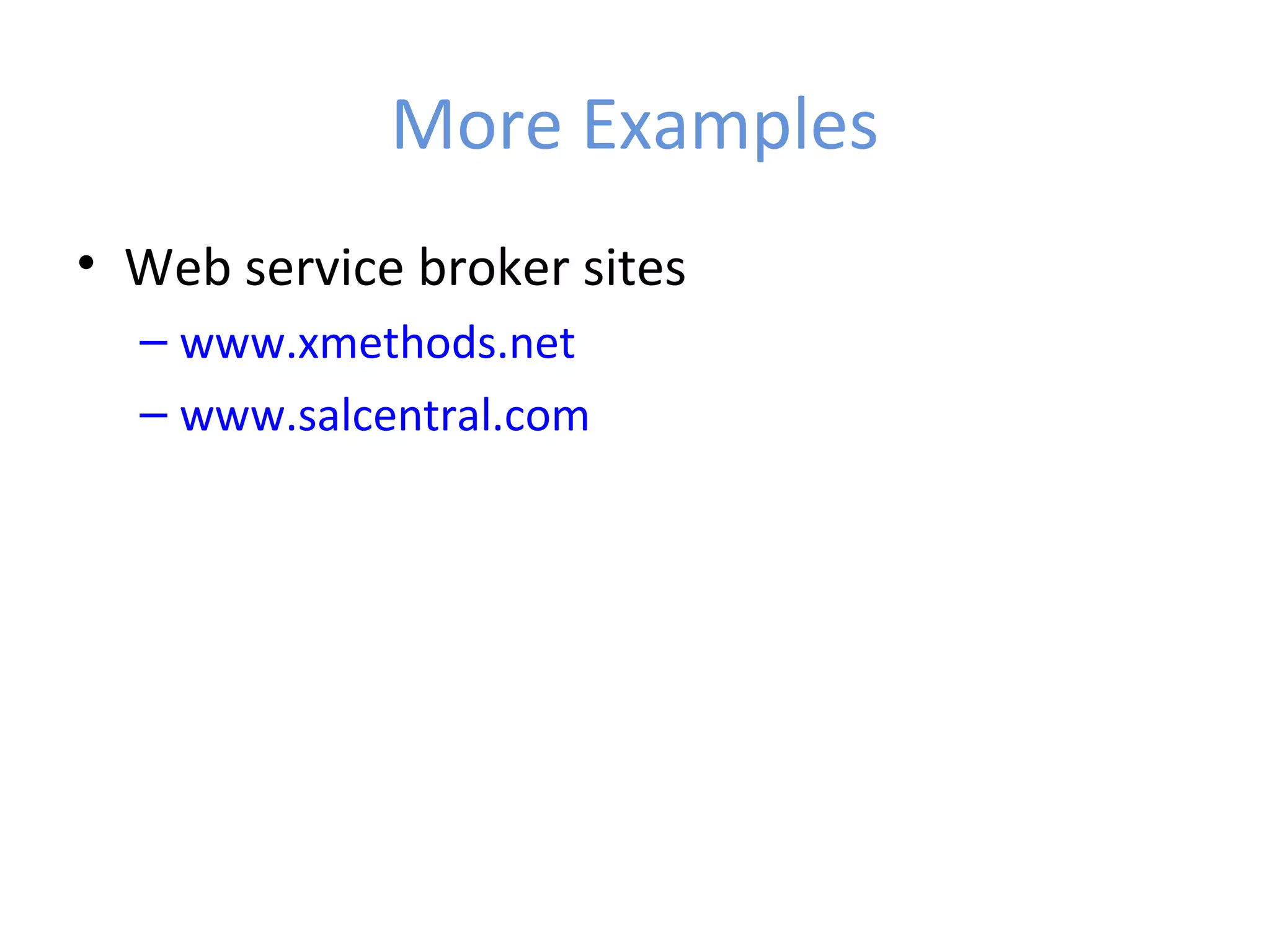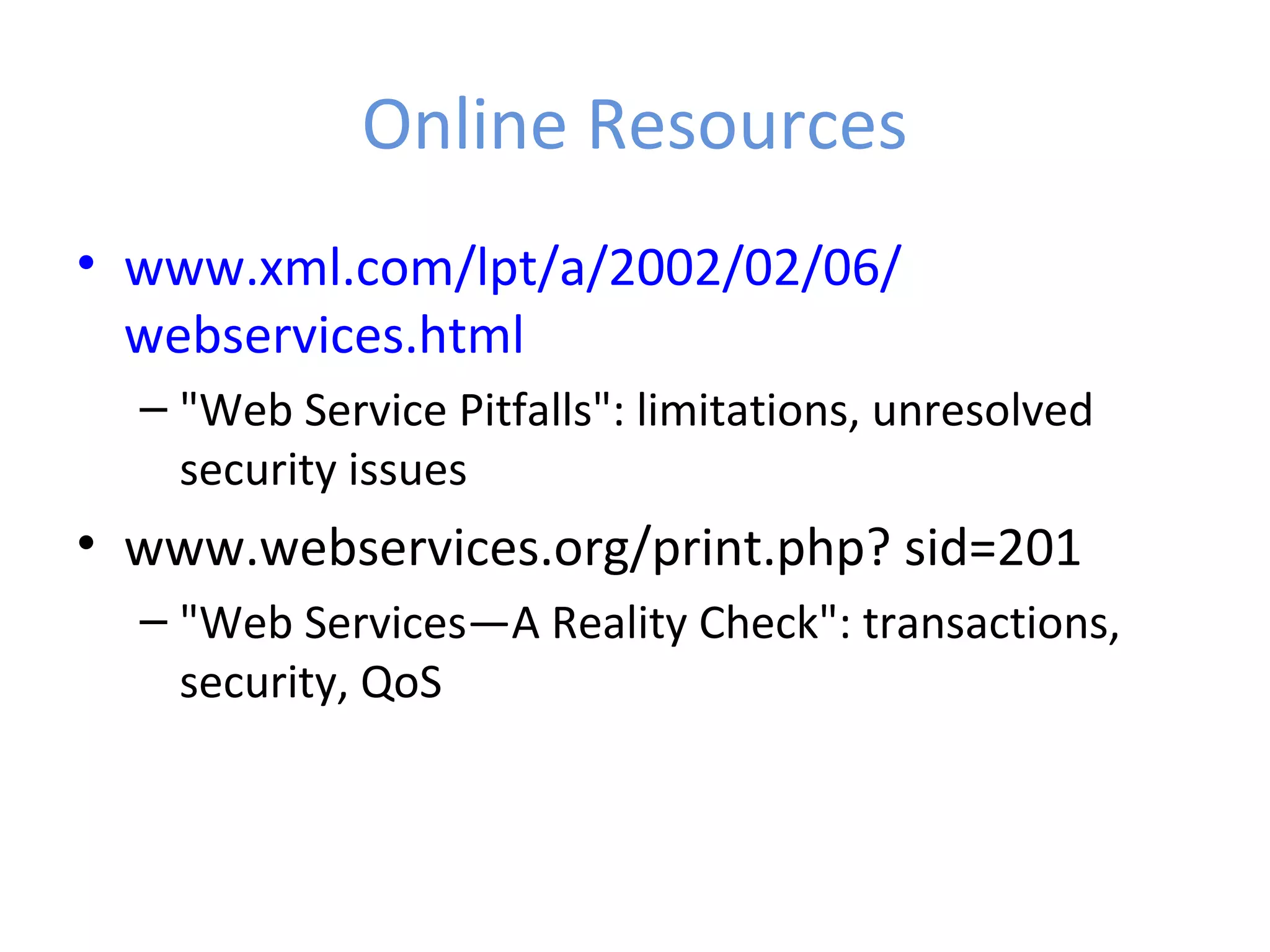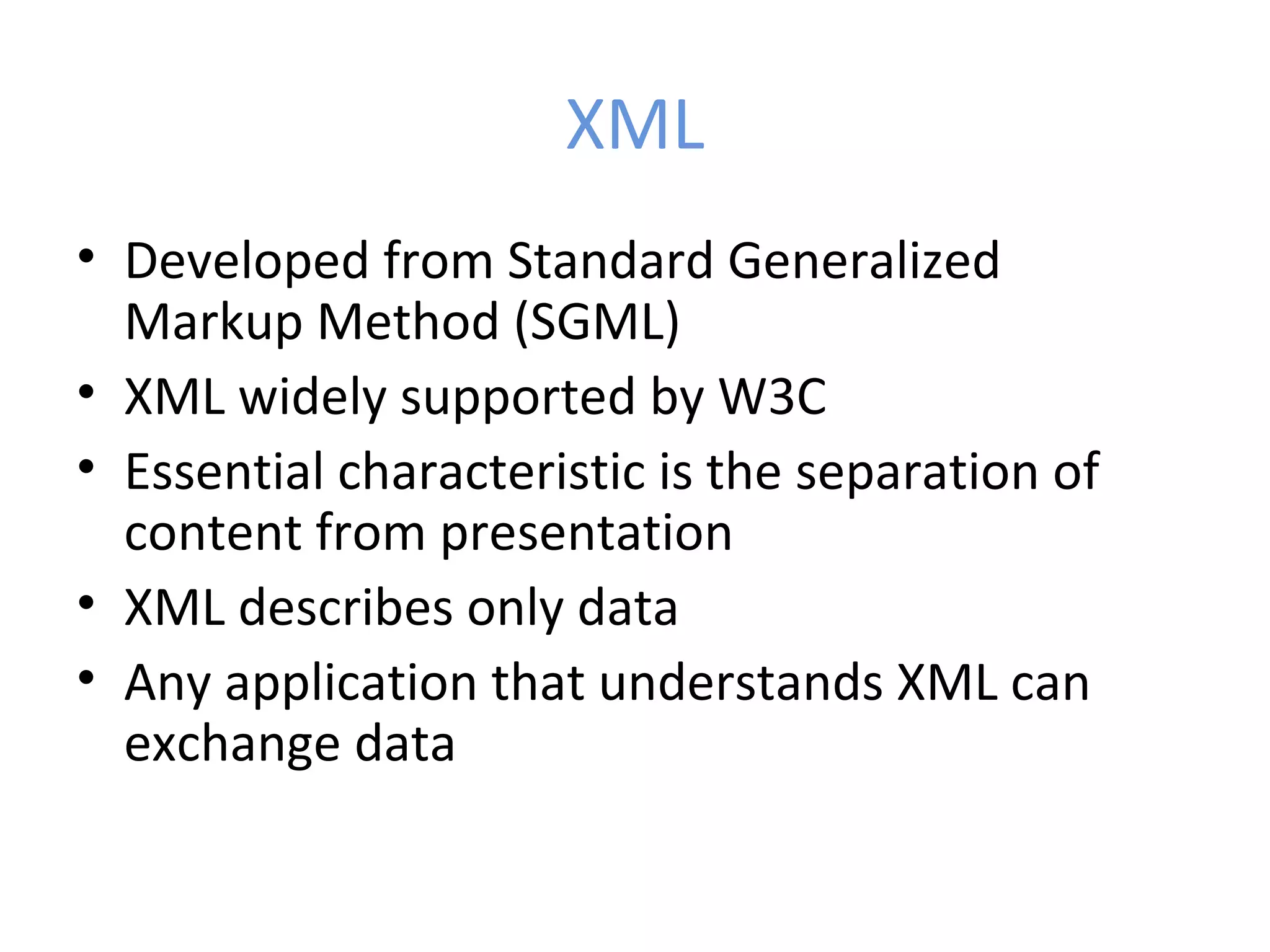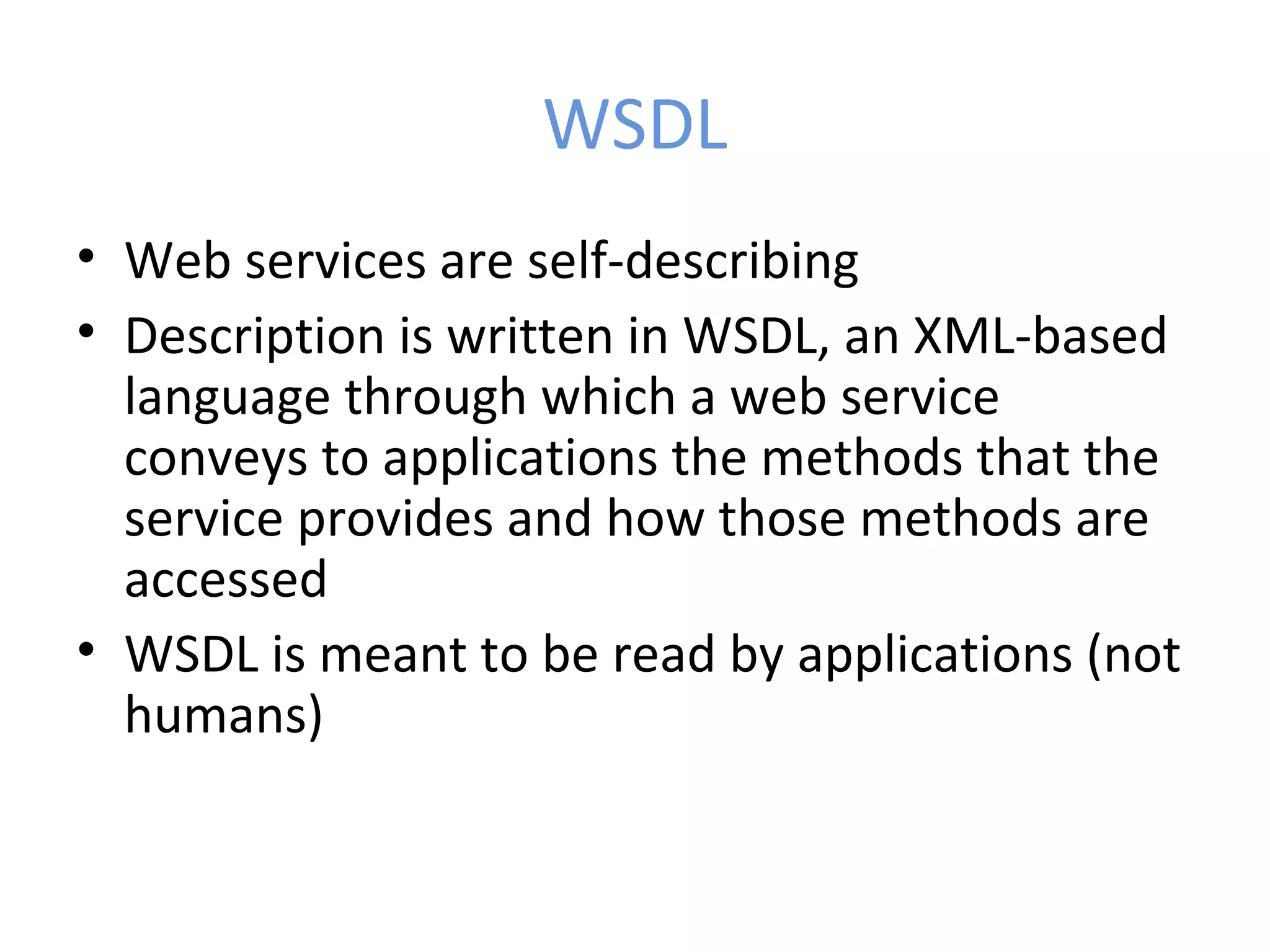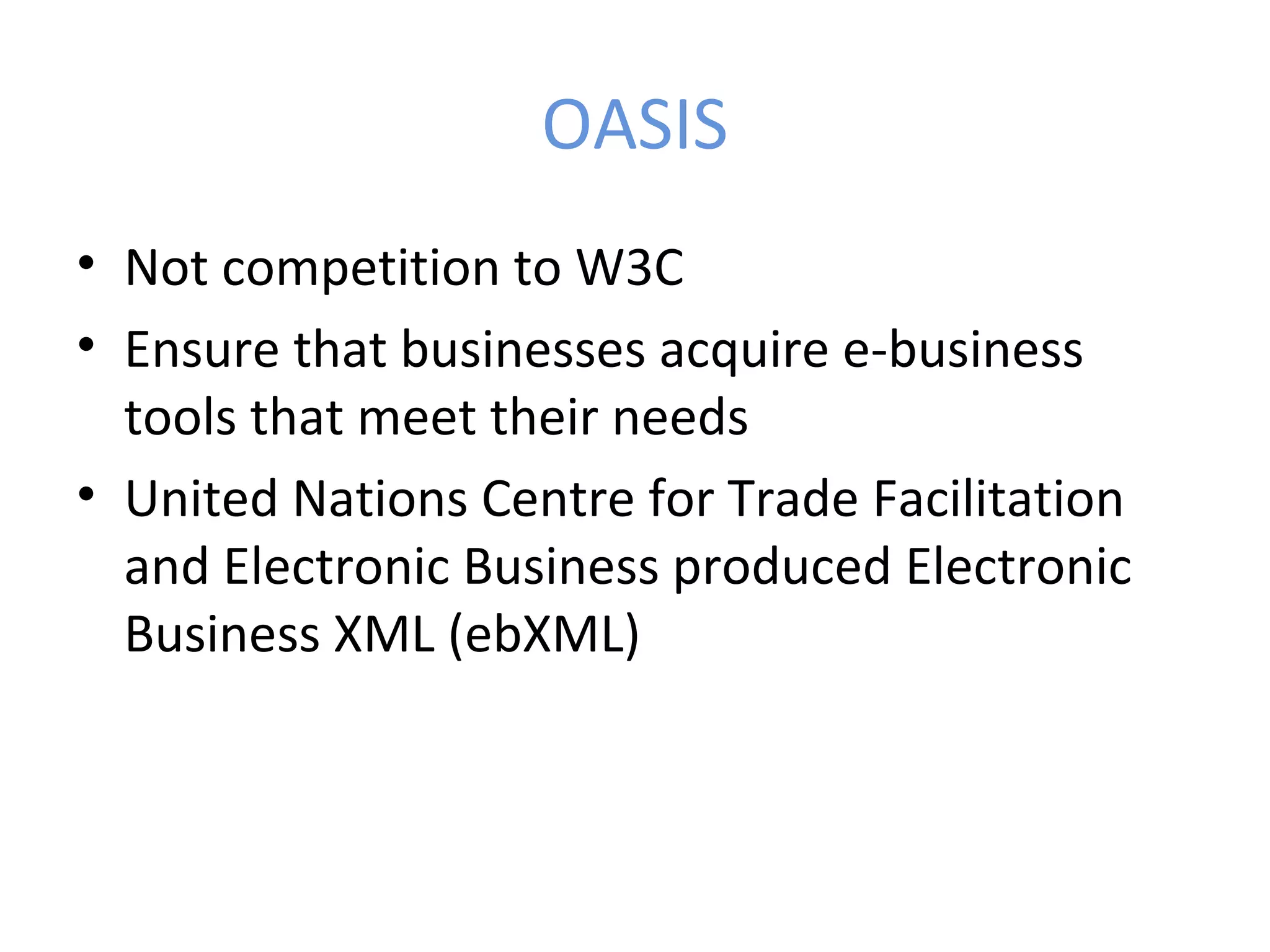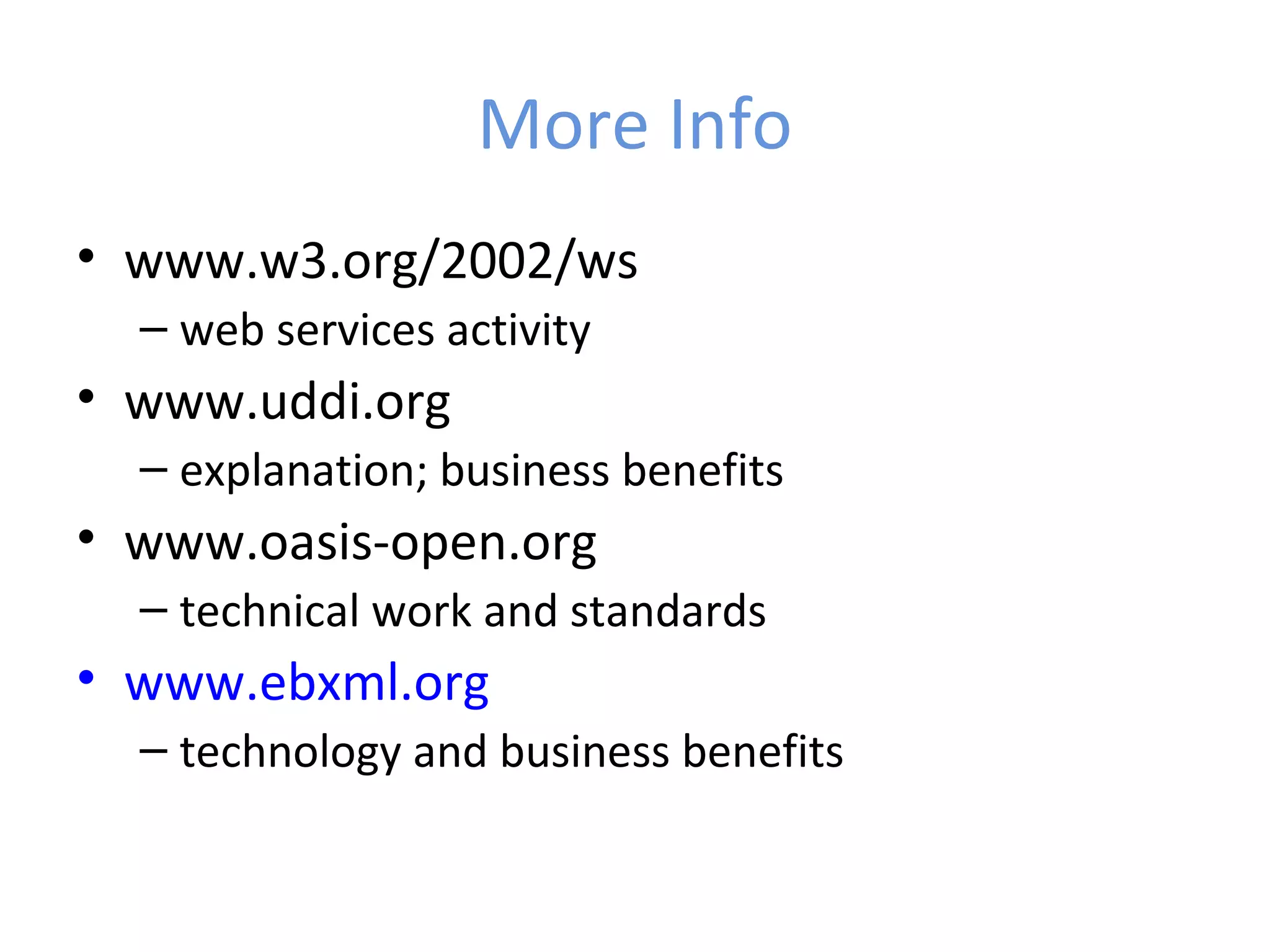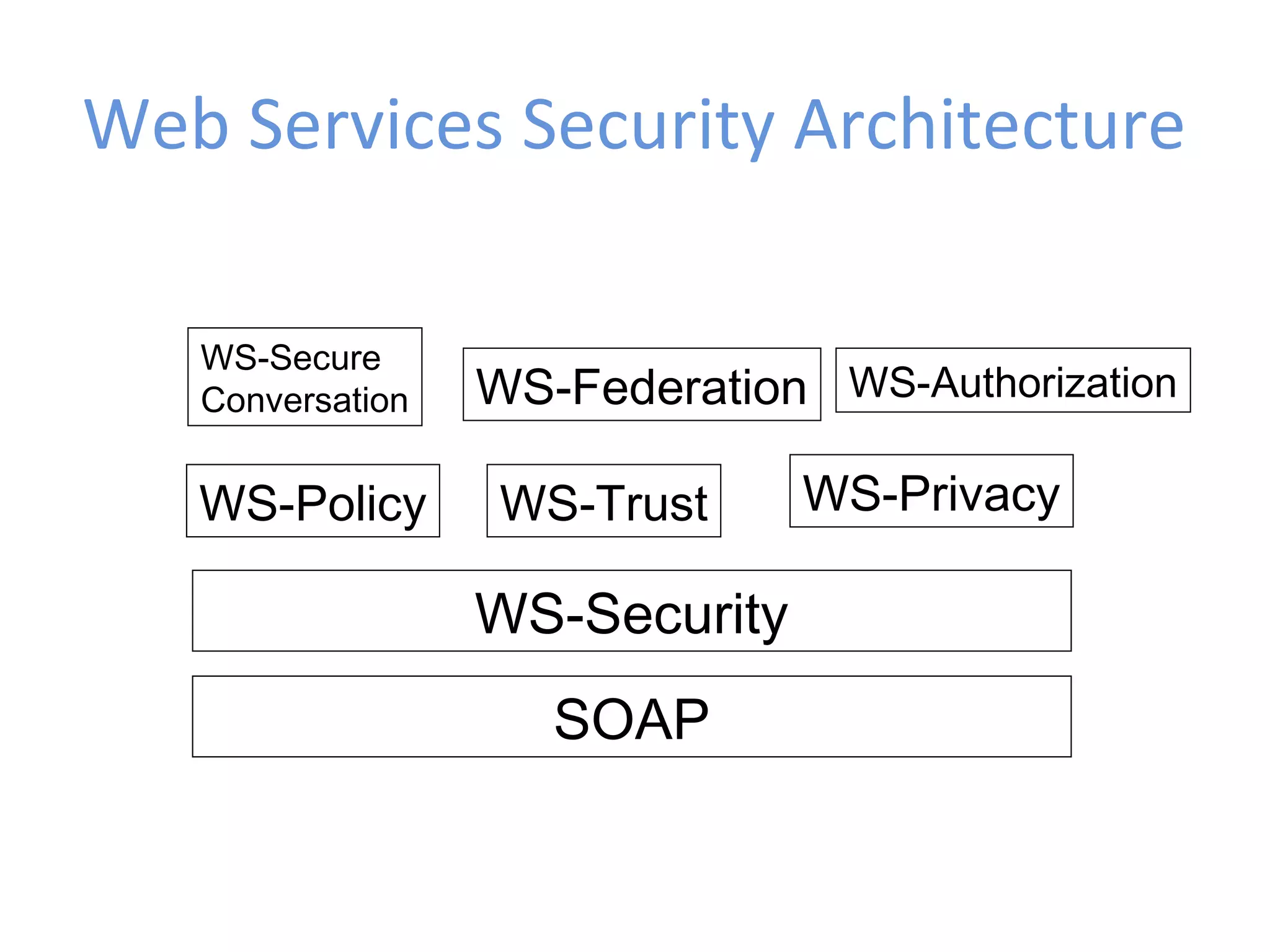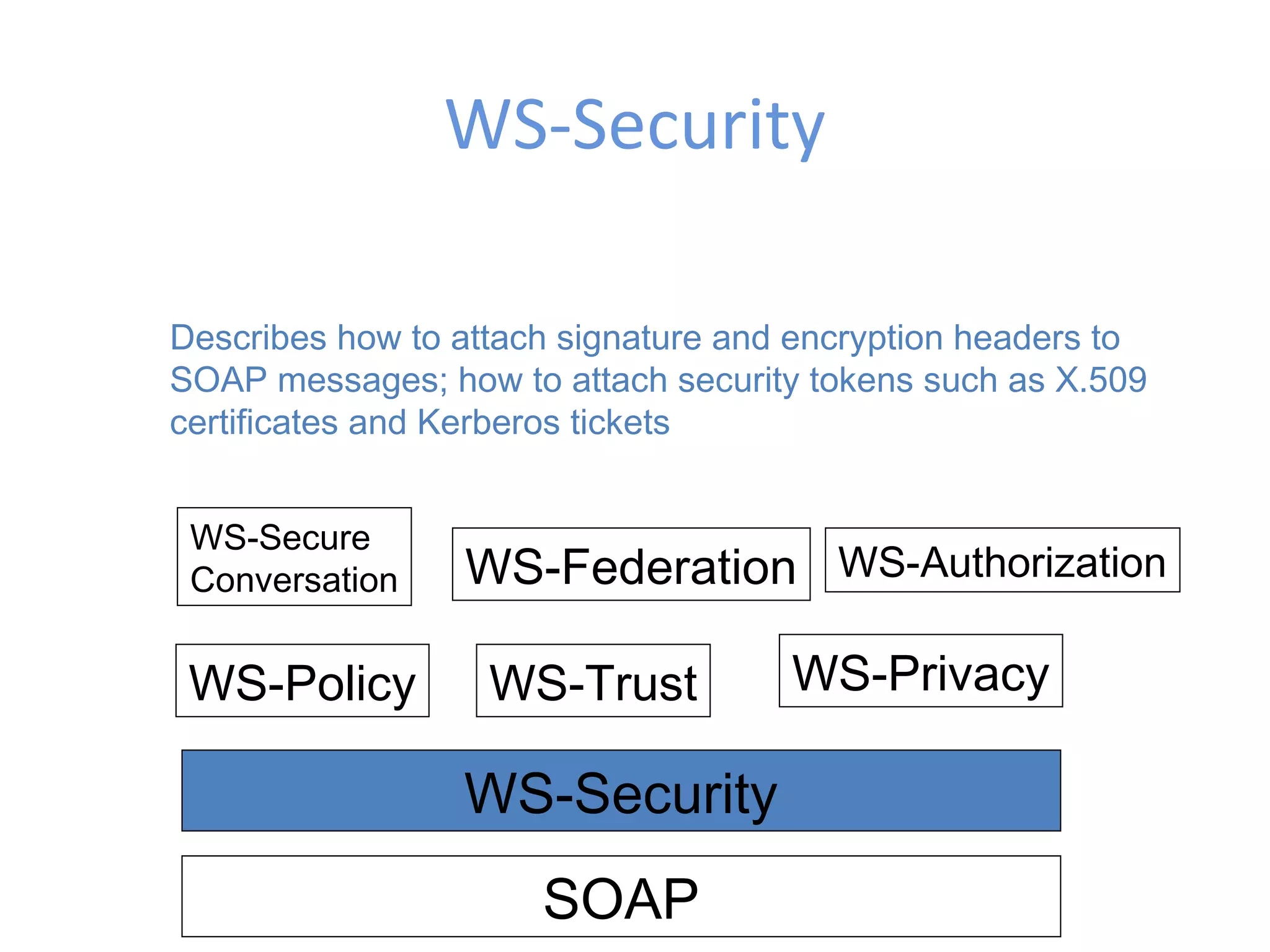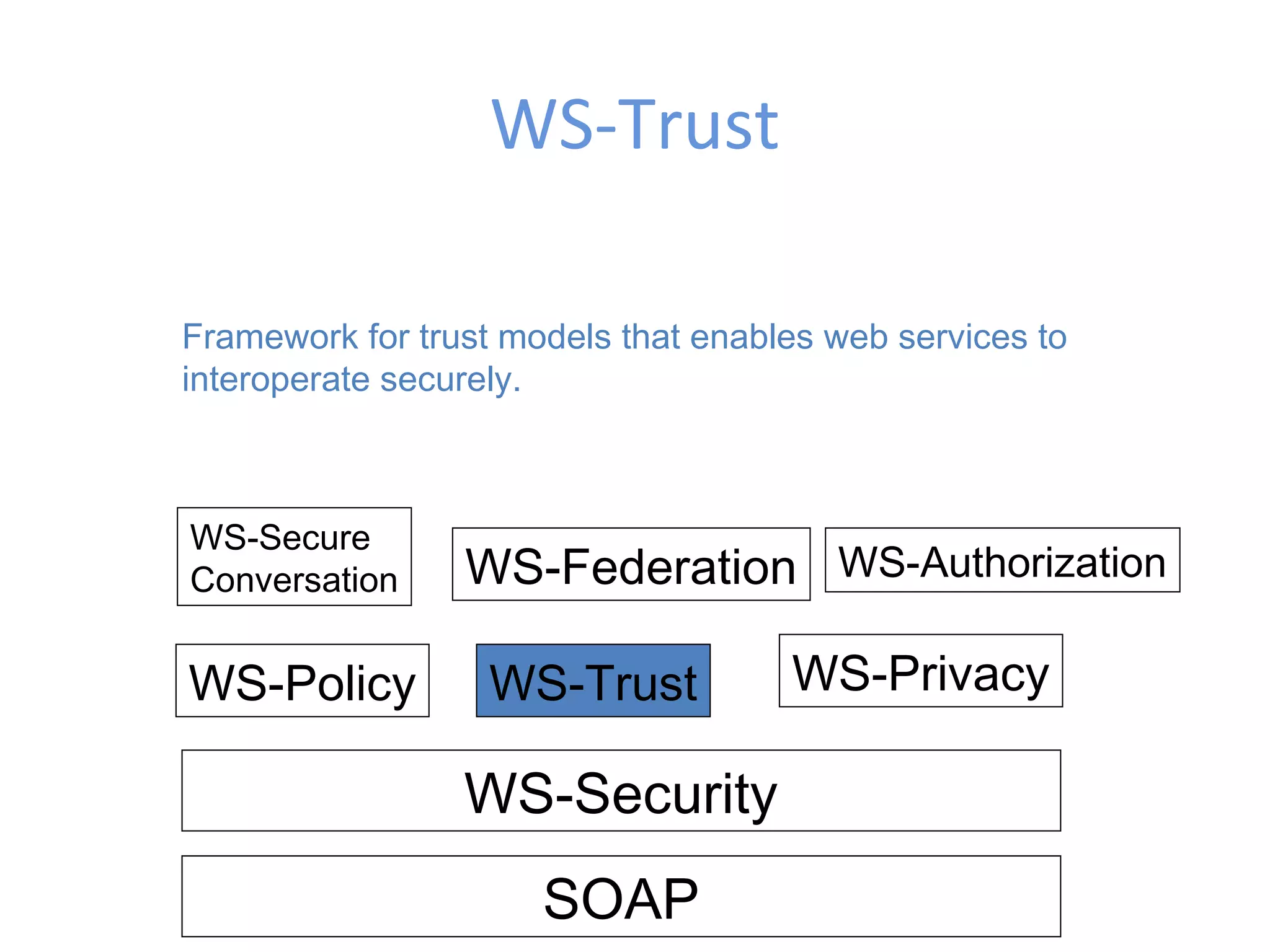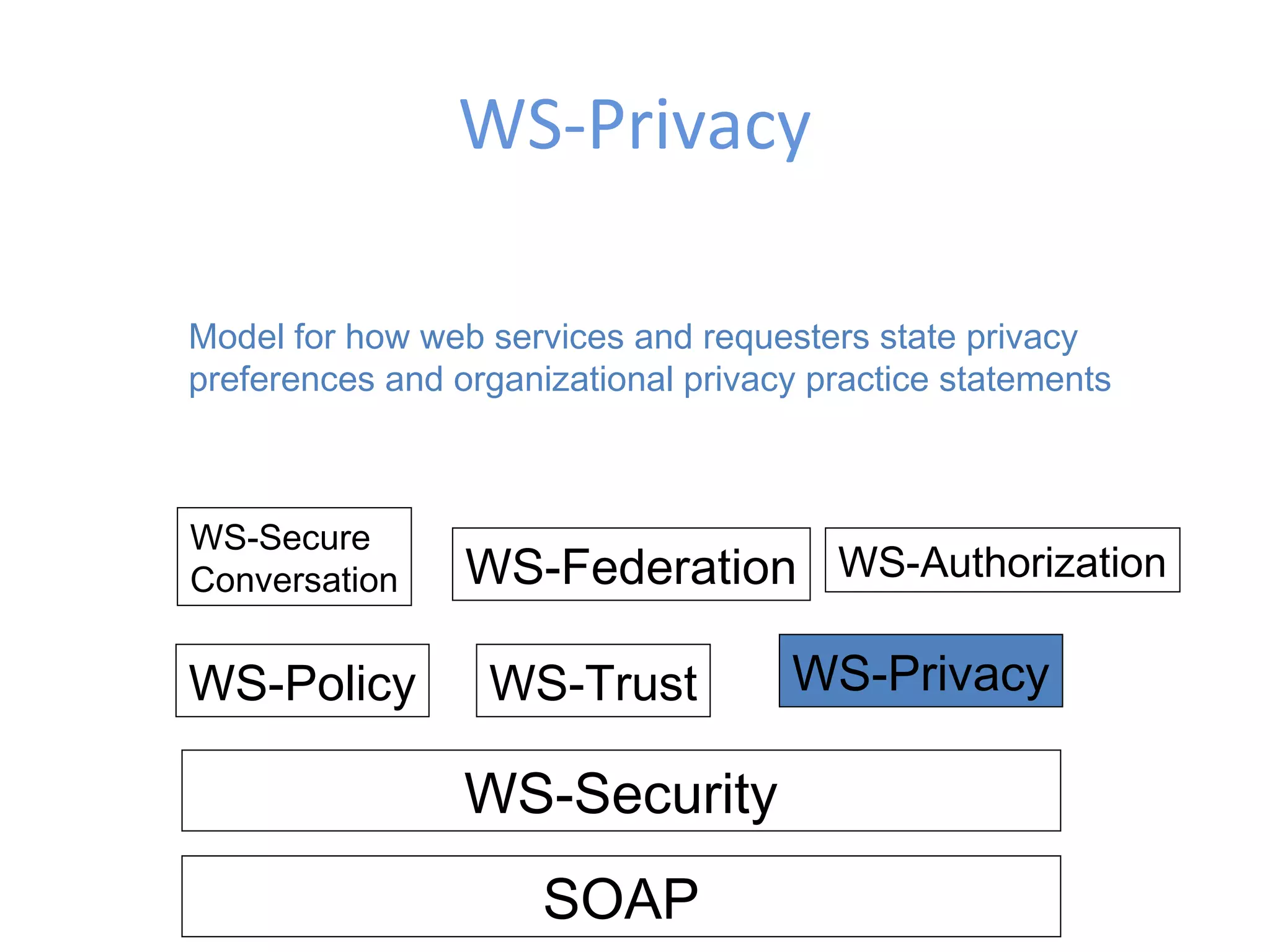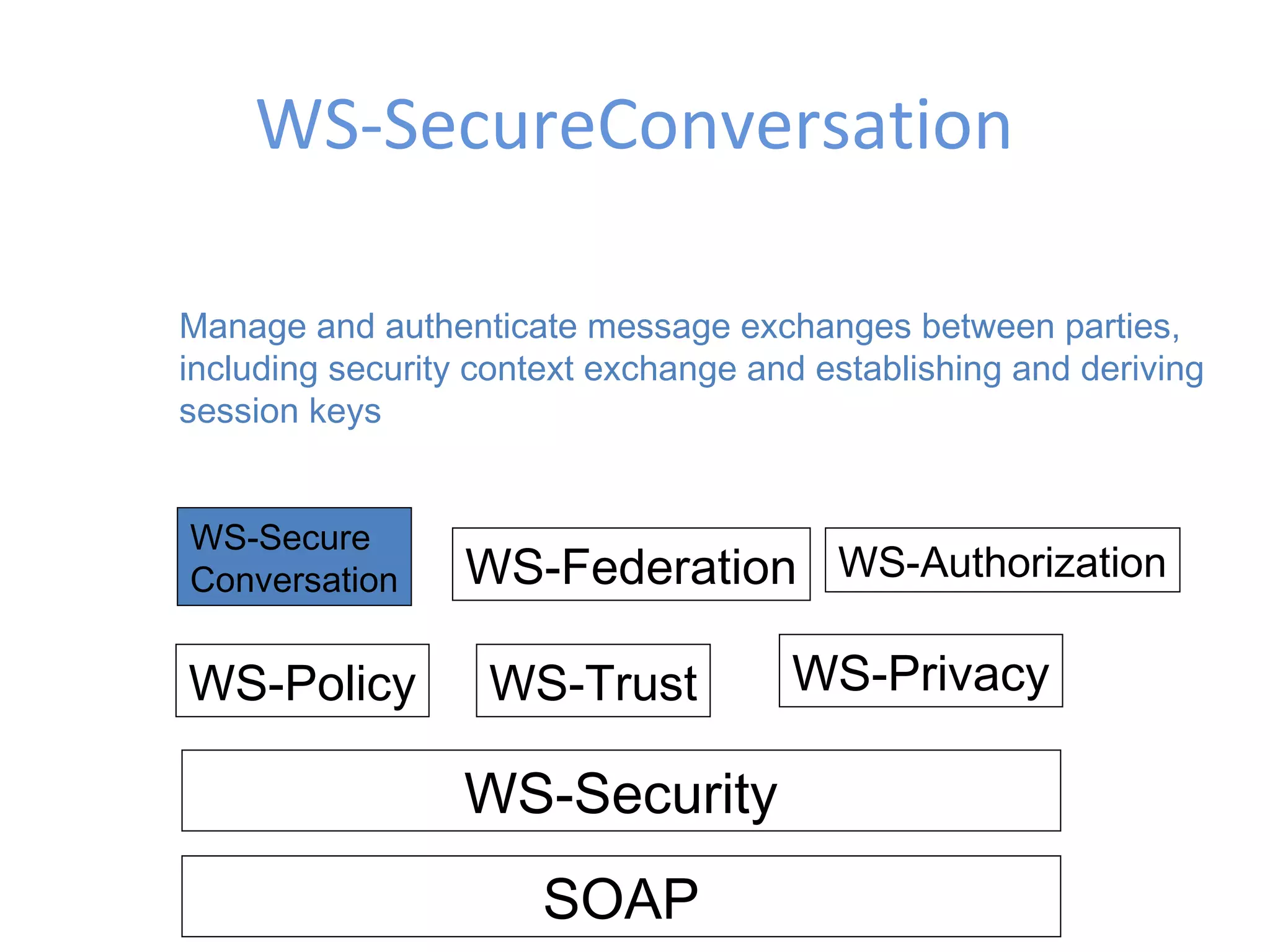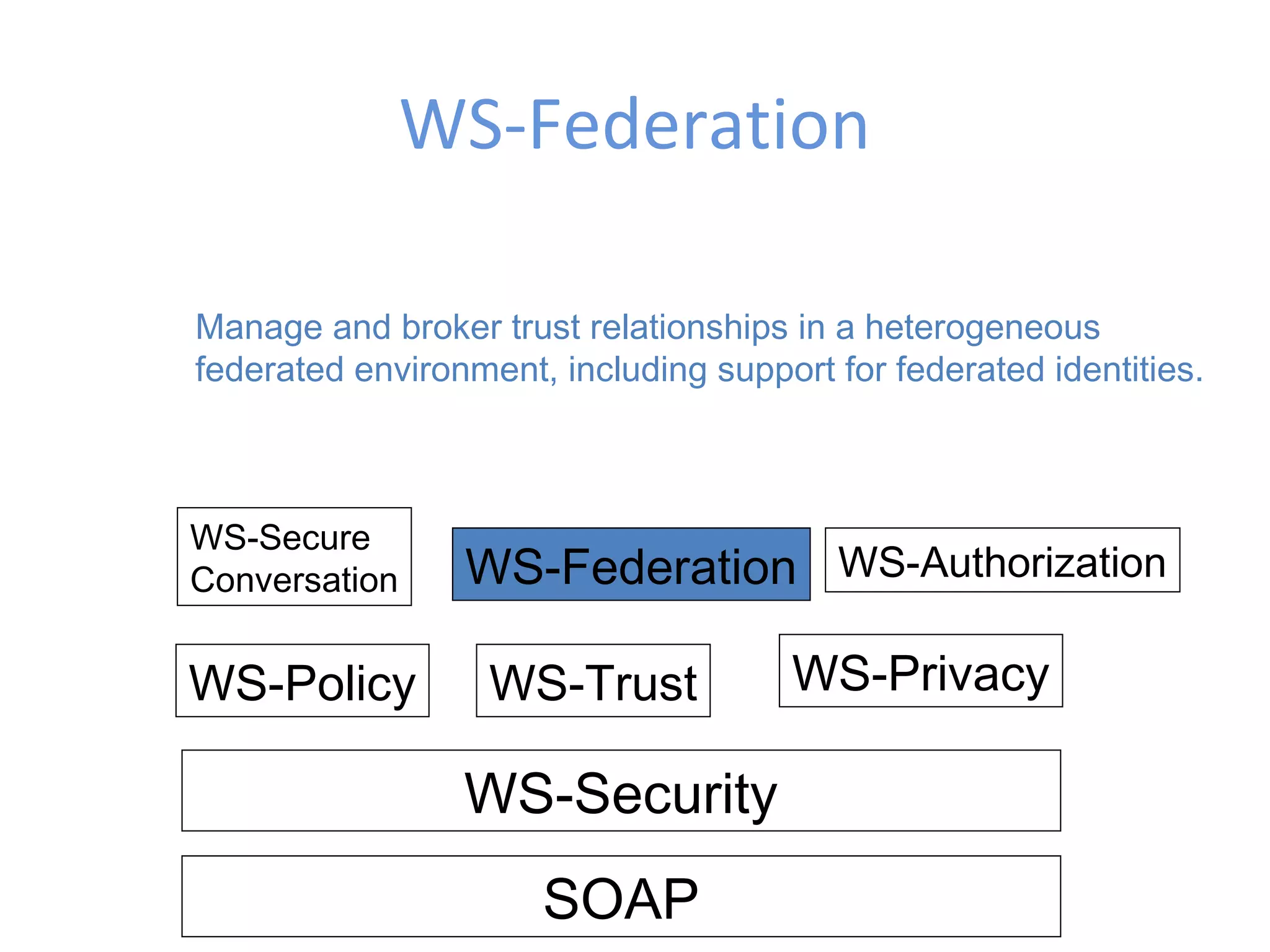Web services emerged from developments in structured programming, object-oriented programming, distributed computing, and the World Wide Web. While HP proposed the concept in 1999, Microsoft introduced the term "web services" in 2000 and made web services a strategic priority. Web services use open standards including XML, SOAP, WSDL, and UDDI. They provide advantages like open standards, modularity, and lower implementation costs. Real-world examples of web services include UC-Berkeley unifying communications and Eastman Chemical providing real-time product access to distributors. Security standards for web services include WS-Security, WS-Policy, WS-Trust, and others.

